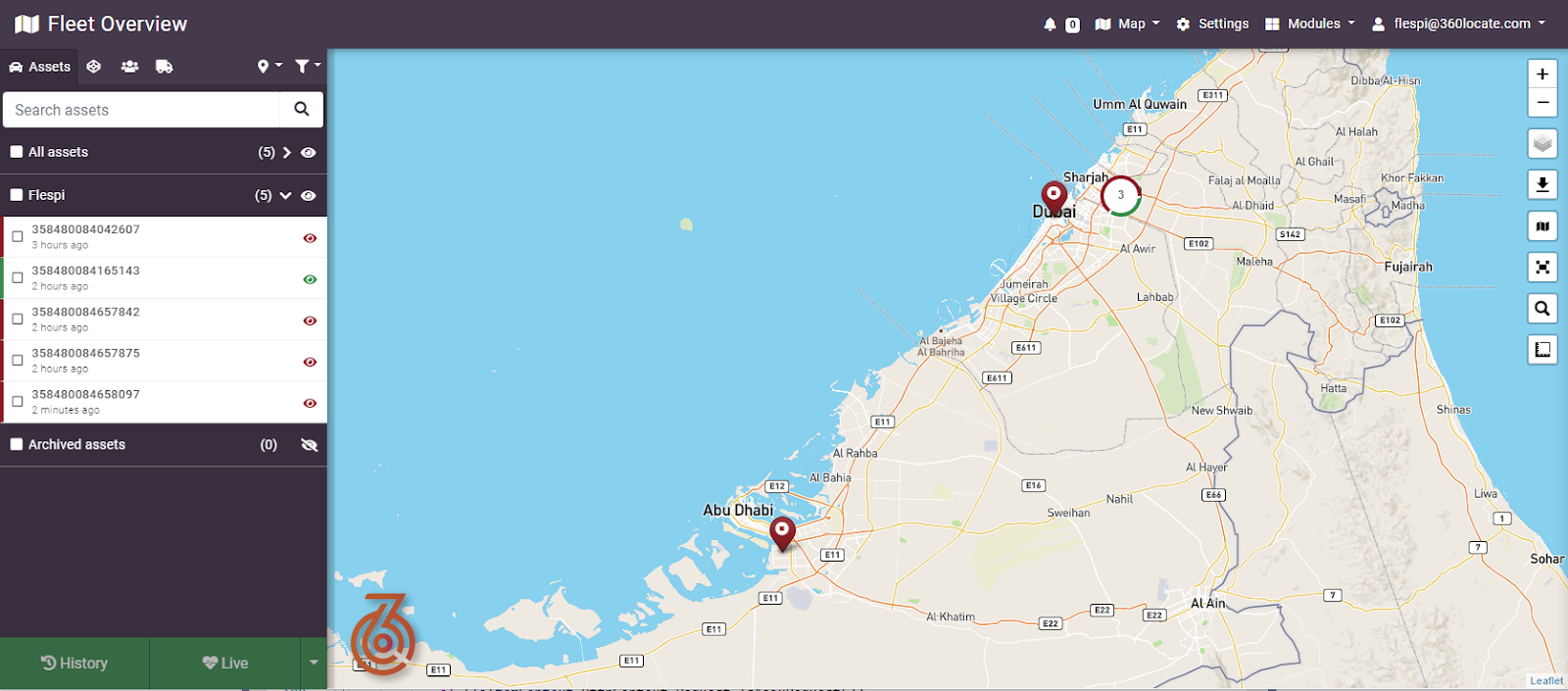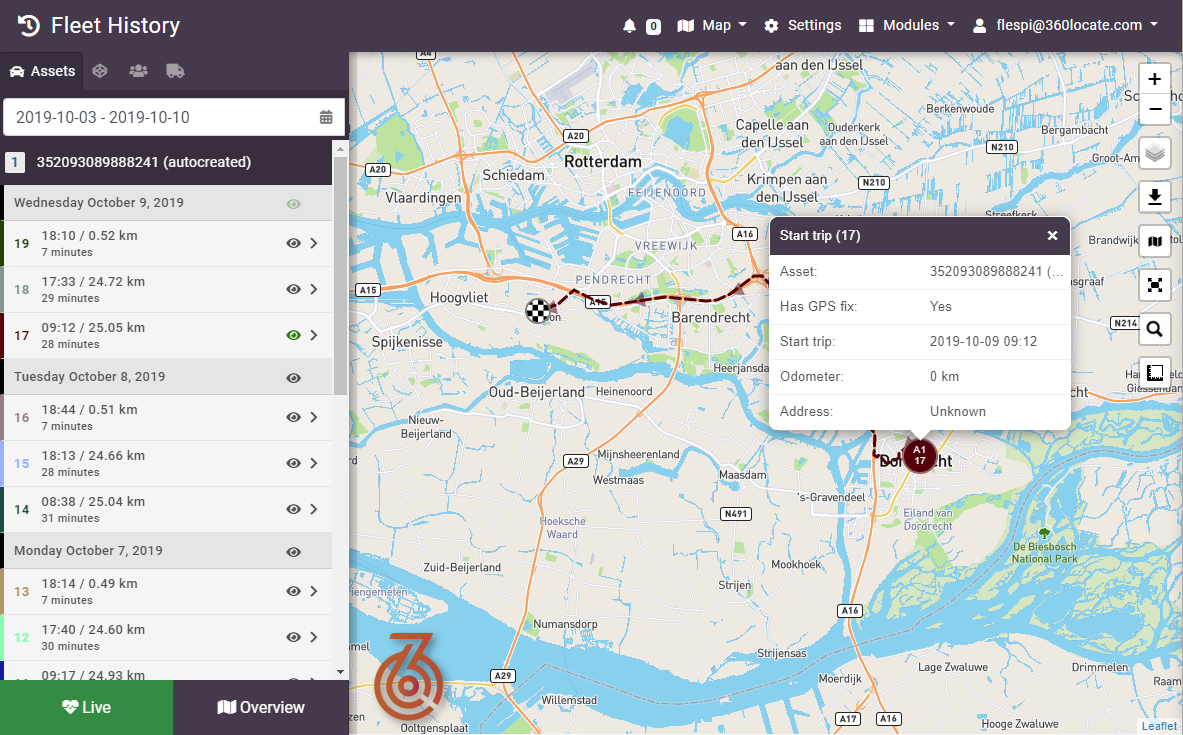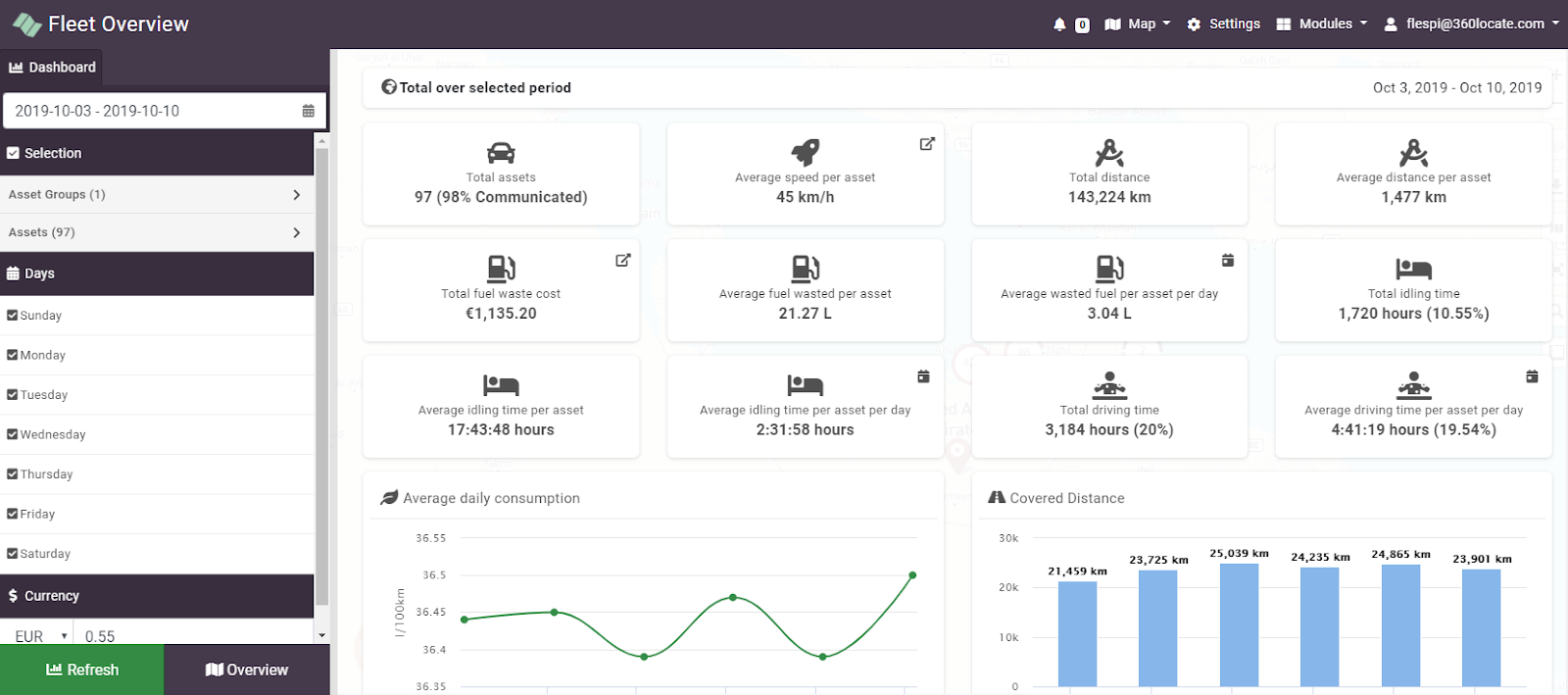Fleet management platforms of all shapes and forms pop up on the market every now and then. They differ in some features, interface, pricing model, etc. but most of the time cater to the same pool of customers and satisfy 80% of the same customer needs. Coming up with a different concept requires a deep understanding of the market and advanced analytical skills to pinpoint the free niches with scalability potential.
This is what guys from 360locate used to create Fleet Overview — a fleet tracking web application aggregating GPS data from multiple GPS monitoring platforms via API. The list of currently supported sources includes flespi, Wialon, 360Locate, Trusttrack (Ruptela), 3D Services.
Let us tell you a little more about what this solution can do for you and where flespi makes a contribution.
Highlights
Typically GPS tracking web applications like Fleet Overview are bound to or are a part of a specific GPS platform. In the case with Fleet Overview (and this is their key point-of-difference) the GPS tracking web application is independent of the GPS platform used. As long as there is an API to can connect to, Fleet Overview can pair with a platform.
The target audience includes GPS Solution Providers, who can use Fleet Overview to enhance their existing product offering, and end customers, who can utilize Fleet Overview for their projects directly.
Fleet Overview can be used in addition to or to replace the GPS platform default to. It will differentiate the GPS solution provider from the competition because they can offer a unique piece of functionality for merging data from GPS trackers connected to multiple GPS tracking platforms into a single Fleet Overview account.
The 360locate team focuses on providing extra value for each customer's telematics use case. Their developers work personally with the customers to maximize the benefit from Fleet Overview for the business by customizing dashboard metrics and logic to their needs. Such an approach is highly efficient since telematics devices produce a lot of data and it's important to cut out the noise and highlight the value.
As for technologies used, the frontend of Fleet Overview is built in Angular and the backend is built on .Net Core 2.2.
Functionality
Fleet Overview has all the basic capabilities most other fleet management tools have thus covering the points-of-parity to successfully compete on the market.
Since the product is brand new, the implemented functionality includes:
Real-time locations
Trip History
Widget Dashboard
And the following features are coming soon:
Reporting / notifications
Native Mobile App
Geofencing
Cooperation with flespi
As we often point out, flespi is a backend. You need an application layer on top of it to be able to use (and sell) it as an end product. 360locate built Fleet Overview on top of flespi to delegate the connectivity and communication tasks and focus on the business value for the customer.
Fleet Overview relies on flespi Gateway API to collect telemetry for visualization on the interface. Analytics API is used to compute trip activity on the fly.
What was much appreciated about flespi is the lack of unnecessary components (e.g. the frontend part) that most fleet management platforms offer along with the API. Since 360locate develop their own solution, they mostly needed handy access to the right data in the right format, which is exactly what flespi specialized in. Also, understanding the volatile nature of future trends, 360locate expects that flespi’s flexibility will help them adapt to new business cases or create new applications faster.
flespi fit
When a company picks a backend platform for its projects, this is something you cannot switch away from it halfway through, so the decision should be backed with solid arguments in favor of the preferred option. 360locate underlined the following factors as determinative for their case:
Competitive pricing — with the pay-as-you-go model you are charged for what you use only.
Flexible API — having tried various APIs (e.g. Azure Time Series Data), the guys concluded that it was much faster to get up to speed with flespi.
Professional support — responsiveness by the flespi team and quick implementation of software changes. In addition, the documentation is very informative and the blog articles help get up to speed.
Multiple telematics devices integrated — the clients can use a variety of devices so not having to deal with implementing them all gives 360locate more time to focus on adding value for the customer in Fleet Overview.
Bonus
360locate has experience with Flespi and Gurtam for a couple of years now. Before integrating with flespi in Fleet Overview, 360locate created a product called Fleet Health on top of the Gurtam API. Fleet Health is also linked to Fleet Overview, meaning that users can switch from one application to the other with a single user account.
***
Fleet Overview gives vast opportunities to companies already operating multiple fleet management applications — aggregated dashboards, statistics, and analytics let the decision-makers see the whole picture and act accordingly.
P.S. This is the smallest sales pitch ever delivered by 360locate guys:
“flespi has a great platform. If you want an application on top of it or have different requirements, give us a call ;-)”




